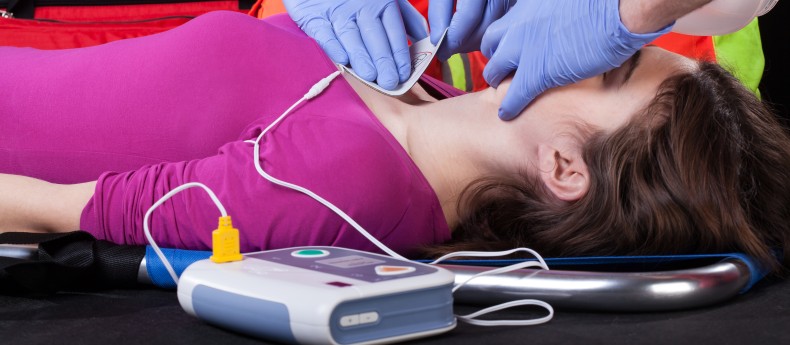
AEDs: The Spark of Life
Did you know that in the time you take to read this article, another victim will be claimed by sudden cardiac arrest?
Heart disease remains the world’s leading cause of death. According to the American Red Cross, more than 200,000 people in the United States die every year from sudden cardiac arrest. Up to 50,000 of these deaths could be prevented if someone uses CPR at the time of the emergency and an automated external defibrillator (AED) is available for immediate use.
An AED is a device that is about the same size as a laptop and measures a heartbeat for erratic activity. If it detects this, the AED directs the rescuer to administer an electric shock to force the heart into an effective rhythm of its own again. An AED is simple enough for a layperson to use.
“The sooner shocks are given, the better,” says Dr. Martin Springer, Chair of the Emergency Department at Beijing United Family Hospital (BJU). “Seconds count. The idea of distributing AEDs throughout a hospital is to decentralize the capacity to shock someone in cardiac arrest, thus insuring that shocks are given as fast as possible. It helps that AEDs are so simple (and programmed not to harm) that nurses can use them with only minimal training and without a doctor’s order.”
Studies from the Sudden Cardiac Arrest Association show that if early defibrillation is provided within the first minute, the odds are 90 percent that the victim’s life can be saved. After that, the rate of survival drops ten percent with every minute. As many as 30 to 50 percent of patients are likely to survive if both CPR and AEDs were used within five minutes of collapse.
“If you have sudden cardiac arrest (and at least 50% of the population has no idea that they have any heart disease), and if you are defibrillated quickly, your chance of a normal life [after recovery] is as high as 40% or more.” says Dr. Springer.
Copyright United Family Healthcare 2014 All right reserved - 京卫网审[2014]第1927号 - 京ICP备13017554号-4
深圳新风和睦家医院 广审号:粤(B)广[2024]第09-10-1049号


